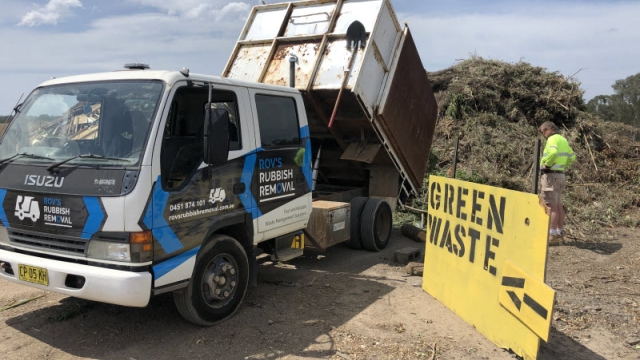
Declutter Your Life: The Ultimate Guide to Rubbish Removal

Living in a cluttered environment can often feel overwhelming and stressful. The accumulation of unwanted items, old furniture, and various bits and pieces can weigh heavily on both our physical space and our mental well-being. Rubbish removal is more than just clearing out your home; it is a vital step towards creating a harmonious and organized living space that fosters peace and productivity.
In this guide, we will explore the essentials of rubbish removal, providing tips and strategies to help you effectively declutter your life. Whether you are tackling a small room or an entire house, understanding the process of rubbish removal can empower you to take charge of your space and life. Say goodbye to unnecessary items and hello to a fresh start.
Understanding Rubbish Removal
Rubbish removal is an essential service that helps individuals and businesses clear out unwanted items from their spaces. This process involves the collection, transportation, and disposal of various types of waste, which can range from household garbage to construction debris. Understanding the different types of rubbish is crucial, as it can impact how, when, and where you dispose of these items. Knowing when to seek professional assistance can make the decluttering process more efficient and effective.
In many cases, people tend to accumulate items over time that no longer serve a purpose. Whether it’s old furniture, electronic waste, or simply things that are broken beyond repair, rubbish removal helps reclaim valuable space in your home or workplace. Additionally, it’s important to recognize that not all waste is created equal. Some materials require special handling due to environmental concerns or local regulations, highlighting the importance of working with experienced rubbish removal services.
Beyond personal benefits, rubbish removal contributes to larger environmental goals. Proper disposal of waste ensures that recyclable materials are processed accordingly and hazardous materials are handled safely. By being proactive in rubbish removal, you not only tidy your surroundings but also play a vital role in promoting sustainable practices. Understanding how rubbish removal works empowers you to make informed decisions that benefit both your living environment and the planet.
Types of Rubbish
Rubbish can be classified into several categories, each requiring different methods for removal. Firstly, general waste consists of everyday items that cannot be recycled or composted, such as food wrappers, broken furniture, and other miscellaneous household items. This type of rubbish usually ends up in landfills, making it important to minimize its generation through conscious purchasing and recycling practices.
Secondly, recyclable materials include paper, cardboard, plastics, glass, and metals. These items can be processed and transformed into new products, significantly reducing the amount of waste sent to landfills. Many communities provide separate recycling bins to make it easier for residents to properly dispose of these materials and contribute to sustainability efforts.
Lastly, hazardous waste encompasses items that can be dangerous to human health and the environment, such as batteries, chemicals, and electronic waste. Proper disposal of these types of rubbish is crucial, as they require special handling to prevent contamination and harm. Many local authorities offer designated collection days or drop-off centers for hazardous materials to ensure that they are disposed of safely.
DIY vs. Professional Removal
When considering rubbish removal, one of the first decisions to make is whether to tackle the task yourself or hire professionals. DIY rubbish removal can be a cost-effective option for those who have the time and physical ability to manage the workload. It allows for complete control over the process, from sorting through items to transporting them to the appropriate disposal facility. However, this approach requires planning, physical effort, and knowledge about local disposal regulations.
On the other hand, professional rubbish removal services provide convenience and expertise that can be invaluable. They have the necessary equipment, experience, and manpower to efficiently handle large volumes of waste or bulky items that may be difficult for an individual to manage alone. Hiring professionals can save time and reduce the physical strain associated with heavy lifting and transport. Additionally, they are often well-versed in eco-friendly disposal practices, helping to ensure that items are recycled or disposed of properly.
Ultimately, the decision boils down to personal preferences and circumstances. If you have a small amount of rubbish and are comfortable with the work, DIY removal can be satisfying and empowering. Conversely, if you’re facing a larger project or lack the time and resources, engaging a professional service might be the better route. Weighing these considerations will help determine the most effective approach for your rubbish removal needs.
Eco-Friendly Disposal Methods
Rubbish Removal Sydney
When it comes to rubbish removal, adopting eco-friendly disposal methods is essential for minimizing our impact on the environment. Recycling is one of the most effective ways to ensure that materials are repurposed instead of ending up in landfills. Many items, such as paper, glass, plastics, and metals, can be recycled and transformed into new products. By separating recyclables from your general waste, you contribute to a circular economy, reducing the need for new resources and lowering greenhouse gas emissions.
Another responsible approach to rubbish removal is composting. Organic waste such as food scraps, yard waste, and other biodegradable materials can be composted to create nutrient-rich soil. Composting not only reduces the volume of waste that goes to landfills but also enriches the earth, promoting healthier plant growth. By setting up a compost bin at home or utilizing local composting programs, individuals can effectively manage their organic waste while adding value to their gardens.
Donation is also a powerful eco-friendly method for rubbish removal. Many items that are no longer needed or wanted can still be useful to others. By donating clothing, furniture, appliances, and other household items to local charities or thrift stores, you help keep these items out of landfills and provide resources for those in need. This not only supports sustainable living but also fosters a sense of community and generosity.
Tips for Effective Decluttering
Effective decluttering begins with setting clear goals. Take some time to define what areas of your home or life you want to declutter and why. This could be motivated by a desire for a more organized space, reducing stress, or preparing for a move. Having a clear purpose will keep you focused and motivated throughout the process. Start small, perhaps with one room or even a single closet, to avoid feeling overwhelmed.
Once you’ve identified your goals, create a sorting system to make decisions easier. Consider using categories such as keep, donate, recycle, and dispose. As you go through items, ask yourself if each item adds value to your life or serves a purpose. Be honest with yourself and don’t hesitate to let go of things that no longer align with your goals. This method not only simplifies the decision-making process but also helps you see progress as you fill up boxes for rubbish removal.
Finally, establish a routine to maintain your decluttered space. Make it a habit to regularly evaluate the items around you, perhaps on a seasonal basis, to ensure that clutter doesn’t creep back in. Incorporate daily or weekly tidying rituals, and involve family or housemates if you share your space. With consistency, you can enjoy the benefits of a clutter-free environment that feels lighter and more welcoming.



